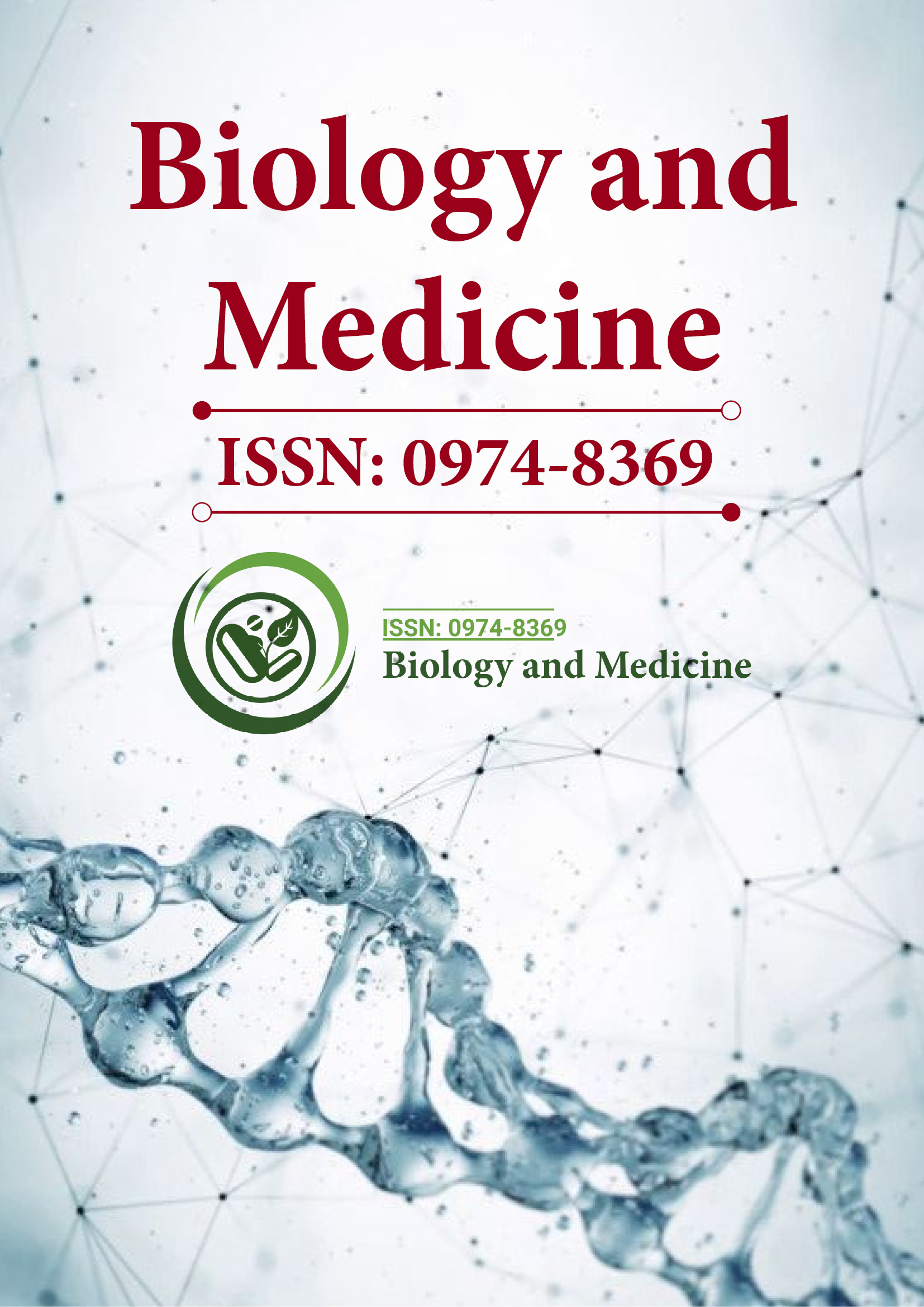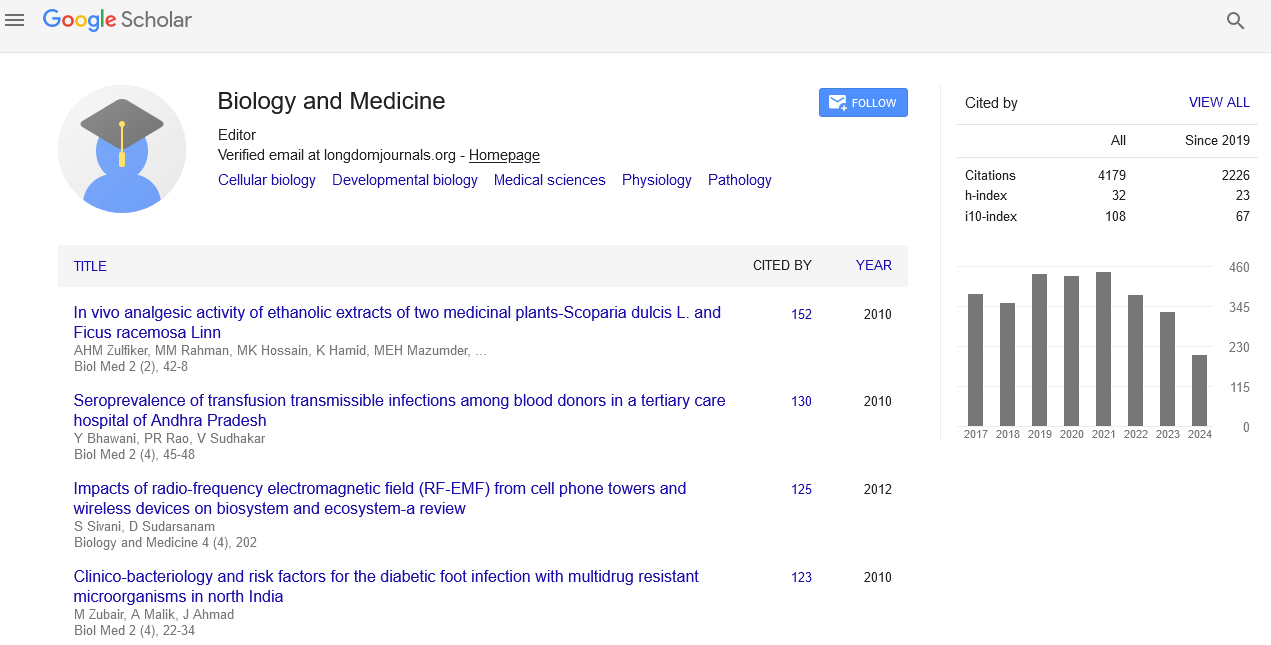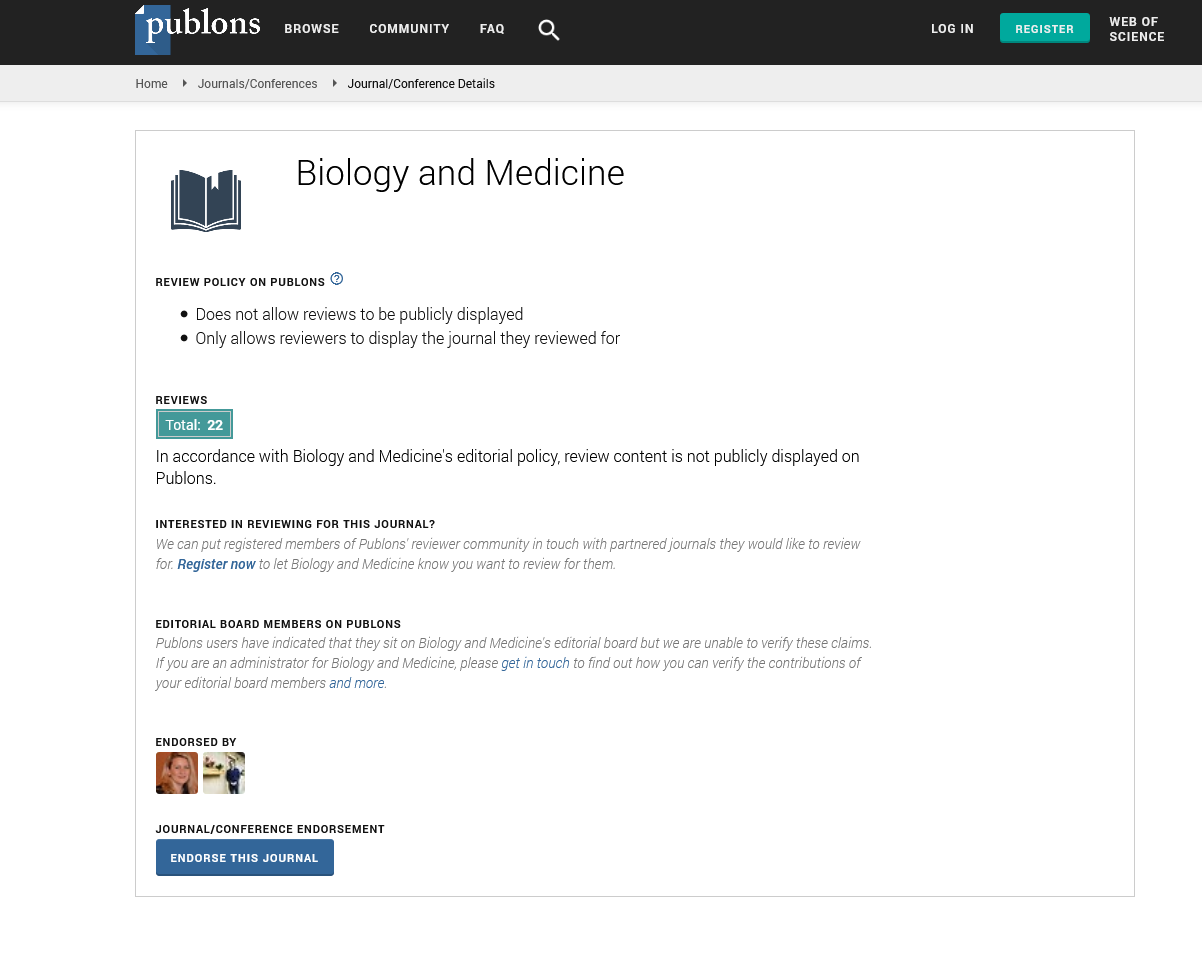Indexed In
- Open J Gate
- Genamics JournalSeek
- CiteFactor
- Cosmos IF
- Scimago
- Ulrich's Periodicals Directory
- Electronic Journals Library
- RefSeek
- Hamdard University
- EBSCO A-Z
- Directory of Abstract Indexing for Journals
- OCLC- WorldCat
- Proquest Summons
- Scholarsteer
- ROAD
- Virtual Library of Biology (vifabio)
- Publons
- Geneva Foundation for Medical Education and Research
- Google Scholar
Useful Links
Share This Page
Journal Flyer

Open Access Journals
- Agri and Aquaculture
- Biochemistry
- Bioinformatics & Systems Biology
- Business & Management
- Chemistry
- Clinical Sciences
- Engineering
- Food & Nutrition
- General Science
- Genetics & Molecular Biology
- Immunology & Microbiology
- Medical Sciences
- Neuroscience & Psychology
- Nursing & Health Care
- Pharmaceutical Sciences
Perspective - (2025) Volume 17, Issue 6
The Role of Mitochondrial Dysfunction in Aging and Chronic Diseases
Elena Rodriguez*Received: 30-May-2025, Manuscript No. BLM-25-29517; Editor assigned: 02-Jun-2025, Pre QC No. BLM-25-29517 (PQ); Reviewed: 16-Jun-2025, QC No. BLM-25-29517; Revised: 23-Jun-2025, Manuscript No. BLM-25-29517 (R); Published: 30-Jun-2025, DOI: 10.35248/0974-8369.25.17.776
Description
Mitochondria are often described as the powerhouses of the cell because of their essential role in producing adenosine triphosphate through oxidative phosphorylation. However, their functions extend far beyond energy metabolism. Mitochondria regulate apoptosis, modulate calcium homeostasis, and contribute to the generation of reactive oxygen species, making them central players in maintaining cellular integrity. Over time, however, mitochondrial efficiency tends to decline, contributing to the aging process and predisposing individuals to chronic diseases such as type 2 diabetes, cardiovascular disease, and neurodegenerative conditions like Alzheimer’s and Parkinson’s disease. Understanding the role of mitochondrial dysfunction is therefore critical in developing preventive and therapeutic approaches for age-related health decline.
One key factor in mitochondrial dysfunction is the accumulation of mutations in mitochondrial DNA. Unlike nuclear DNA, mitochondrial DNA is located close to the electron transport chain where reactive oxygen species are produced, making it more susceptible to oxidative damage. Furthermore, it lacks protective histones, rendering it even more vulnerable to mutations. As damage accumulates, the efficiency of the electron transport chain decreases, leading to reduced ATP production and further generation of reactive oxygen species in a vicious cycle. This process is thought to underlie many of the cellular changes associated with aging.
Mitochondrial dysfunction also affects tissue-specific functions. In muscle cells, for example, reduced energy production contributes to sarcopenia, the age-related loss of muscle mass and strength. In neurons, impaired mitochondrial dynamics and increased oxidative stress are linked to cognitive decline and neurodegenerative diseases. In the cardiovascular system, endothelial dysfunction caused by mitochondrial abnormalities promotes atherosclerosis and hypertension. These diverse manifestations underscore how mitochondrial health is vital for systemic well-being. Lifestyle factors can either accelerate or mitigate mitochondrial decline. Diets high in processed foods and low in nutrients increase oxidative stress, while caloric restriction and intermittent fasting have been shown in experimental studies to improve mitochondrial efficiency and longevity. Exercise is another powerful intervention, as physical activity stimulates mitochondrial biogenesis through activation of the transcriptional coactivator PGC-1α, which enhances oxidative metabolism. Antioxidants found in fruits and vegetables also play a role by reducing oxidative stress and protecting mitochondrial DNA from damage.
Therapeutically, several strategies are under investigation to restore or enhance mitochondrial function. One promising approach involves supplementation with NAD+ precursors, as NAD+ levels decline with age, impairing energy metabolism and cellular repair. Compounds such as nicotinamide riboside and nicotinamide mononucleotide are being studied for their potential to rejuvenate mitochondrial function. Mitochondrial transplantation, where healthy mitochondria are introduced into damaged cells, represents another experimental technique with potential for treating conditions such as ischemic heart injury. Additionally, pharmacological agents targeting mitochondrial dynamics, including fusion and fission processes, are being explored for neuroprotective effects.
While these therapeutic avenues are promising, challenges remain in translating them into clinical applications. The complexity of mitochondrial biology, combined with individual variability, means that interventions may not have uniform effects across populations. Nevertheless, research continues to provide valuable insights, emphasizing that maintaining mitochondrial health is essential for delaying the onset of chronic diseases and promoting longevity.
Mitochondria stand at the crossroads of energy production, cellular survival, and aging. Their dysfunction contributes to some of the most pressing health challenges of the modern world. By unraveling the mechanisms of mitochondrial decline and developing targeted interventions, researchers are paving the way for a new era of medicine where age-related diseases can be better managed or even prevented. The study of mitochondria not only enhances our understanding of biology but also offers hope for healthier aging and improved quality of life.
Citation: Rodriguez E (2025). The Role of Mitochondrial Dysfunction in Aging and Chronic Diseases. Bio Med. 17:776.
Copyright: © 2025 Rodriguez E. This is an open access article distributed under the terms of the Creative Commons Attribution License, which permits unrestricted use, distribution, and reproduction in any medium, provided the original author and source are credited.


